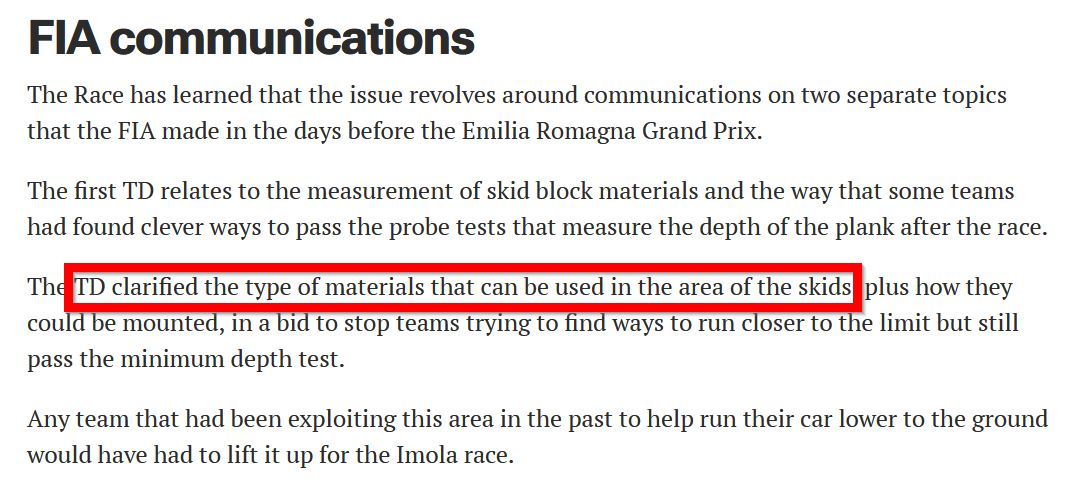Many of us have skipped one important detail regarding the plank, which is the second TD issued at Imola. There were two things involved: the measurement and the
skid block material! https://www.the-race.com/formula-1/fia- ... en-battle/

I don't find the particular article in the rules, but it is known that the skid block material must be from titanium only or a titanium alloy. Even if the wording says this item must be made from titanium, I wonder how FIA could test them not to be coated with, let`s say, an alloy with a thickness of 1mm BN - boron nitride or WC - tungsten carbide in order to decrease the skid block wear. Of course, they could do that testing had they had some tools like HPLC - High Performance Liquid Chromatography to identify the compounds and an MS - mass spectrometer for the mass of each component, but it`s very unlikely due to higher costs.
Now, regarding the plank and the car`s floor bending under the load tests, I understand that FIA is using some static loads, but are they enough to simulate the car`s high loads running through a high-speed corner, knowing that these parts of the track are responsible for the most gains a car could make throughout an entire lap?
And the last question: knowing that Rob Marshall is a master in carbon structures, how about an inner cake tin that has 2 independent/non-connecting layers of carbon fibers with the outer layer (which is in contact with the heat from the brakes) is expanding and lets the air between these 2 layers to expand too thus thermal isolation is bigger at this area? One issue is the thermal inertia, which could be helped by altering the air composition between the layers with other gases with good thermal conduction ...



